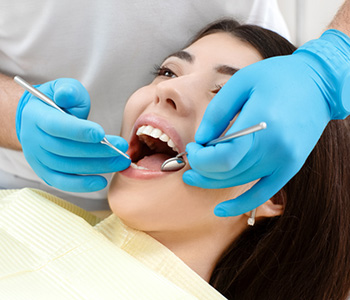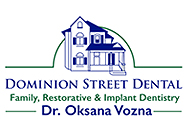Dentist in Alliston explains what to expect from the types of dental implants and techniques

The parts of the mouth are designed to work together as a unit. The loss of even a single tooth disrupts the natural balance, aesthetic, and function. The individual’s bite may change. The bone may deteriorate. Bacteria have new places to hide and cause damage. Dental implants are long-term solutions to replace missing teeth. Located in Alliston, Dr. Oksana Vozna and Dominion Street Dental explain the types of dental implants and techniques.
Types of dental implants
Our teeth have roots and crowns. The roots are not visible as they sit below the gumline. They stimulate the jawbone, anchor the tooth in place, and keep adjacent teeth from shifting. When people think of teeth, they often think of the crowns which are visible and are above the gums. Tooth replacement with implants requires the following pieces:
- Dental implant
- Abutment
- Dental restoration such as a crown, bridge, or denture
Dental implants are small cylinders or posts that replace missing teeth. The implant itself is precisely positioned to replace the missing root. When topped with an abutment and crown, the structure functions as and looks like the natural tooth structure. Since a dental implant is anchored in the jaw, it provides more stability and longevity than other restorations.
Dental implants are made of titanium. Titanium has been used for years in medical and dental treatments. It is often considered the standard for implants. Titanium is a lightweight, yet durable material. With dental implants, the implant and abutment are separate pieces that can then be topped with a crown. Implants are long-lasting, durable, and easily accepted by the body. They replace and restore the tooth’s function.
Book an Appointment
Whether a patient has lost a single tooth or multiple, dental implants may be a replacement option. To replace a single tooth, the implant, abutment, and crown form the structure of the tooth. Two implants may attach to crowns and bridges to restore up to five consecutive missing teeth. To replace several teeth or an arch, implants may be used to anchor an implant-supported denture.
For individuals needing dentures, implant-supported dentures offer more stability than traditional dentures. Implant-supported dentures use a few precisely placed implants to attach and secure the denture. The posts are positioned in the jaw and are connected to the dentures with fittings or attachments. The result is a complete, sturdy smile. Implant-supported dentures are customized to look natural. Furthermore, the upper jaw of these dentures does not cover the roof of the mouth as it does with traditional dentures making them more comfortable for patients. Implant dentures may be fixed or removable.
What to expect

Dr. Vonza is trained in bone regeneration, implant placement, and dental restorations including crowns, bridges, and implant-supported dentures. She is able to handle most implant cases in-house to ensure a smooth, comfortable process for patients. If a patient is already experiencing bone loss, bone regeneration may be necessary. This helps provide appropriate bone mass to support the implant and to protect the sinus cavity.
Replacing a missing tooth with an implant requires more than one dental visit. In a precise process, the implant is positioned in the jaw in place of the missing tooth. The site needs time to heal and for the mouth to accept the implant. Osseointegration is necessary for the outcome to be successful. Although the healing process takes a few months, this time is worth it as it forms the base of a sturdy restoration. Once the mouth has healed, the abutment and restoration can be attached to complete the smile.
Immediately after implant placement, patients may experience some discomfort or minor swelling as the anesthetic wears off. Side effects can be managed with ice packs and over-the-counter pain medication. Use care around the treatment site. Try to avoid chewing near the treatment site. Also, avoid spicy foods and using straws which may irritate the area. As the mouth heals, the side effects will subside. Patients will be given instructions on how to care for the area. Good oral health habits are important for successful treatment and can prolong the lifetime of the implant.
Back to Dental Implants Page



